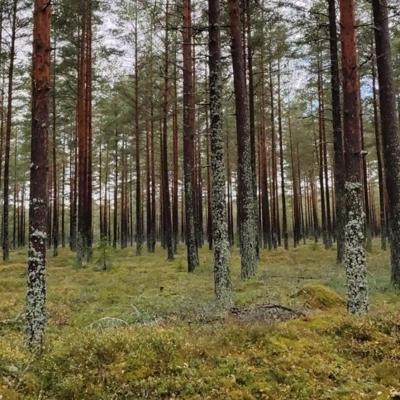Semester Abroad in Sweden
In the north-west of the country, Sweden has the Scandinavian mountains which it shares with Norway. Bridge by plateaus the mountain range slopes down to the lowlands and plains in the east and south of the country. Two-thirds of the country is covered in forests. The most common found trees are the pine and spruce tree. Pine is more dominant in the north where spruce is more common in the south. Despite the country’s altitude, the temperatures are quite middle due to the warm ocean winds and the many lakes. The average temperature in January is 13 to 17°C and in February one of the coldest month -22 to -3°C. Weather forecasts here are said to be only 40% correct. For example, on Monday it is predicted that there will be a lot of rain over the weekend. However, on Friday it can turn out that the whole weekend will be completely sunny.
Sweden has quite a big variation of present daylight depending on the month and location. Around one-seventh of the country is in the article circle. This means that in the summer from the end of May to mid-July the sun never sets in the north. In January however, the sun never rises. In Linköping for example which is located in the southern part of the county, you have daylight from 8:45-15:10 in the winter and daylight from 3:50 to 10:10 in the summer.
Two-thirds of the populations live in the southern part of the country. With a population of 10 million and a surface area of 450.295 square
grablersaskia
21 chapters
15 Apr 2020
Shortly About the Topography and Geography of Sweden
In the north-west of the country, Sweden has the Scandinavian mountains which it shares with Norway. Bridge by plateaus the mountain range slopes down to the lowlands and plains in the east and south of the country. Two-thirds of the country is covered in forests. The most common found trees are the pine and spruce tree. Pine is more dominant in the north where spruce is more common in the south. Despite the country’s altitude, the temperatures are quite middle due to the warm ocean winds and the many lakes. The average temperature in January is 13 to 17°C and in February one of the coldest month -22 to -3°C. Weather forecasts here are said to be only 40% correct. For example, on Monday it is predicted that there will be a lot of rain over the weekend. However, on Friday it can turn out that the whole weekend will be completely sunny.
Sweden has quite a big variation of present daylight depending on the month and location. Around one-seventh of the country is in the article circle. This means that in the summer from the end of May to mid-July the sun never sets in the north. In January however, the sun never rises. In Linköping for example which is located in the southern part of the county, you have daylight from 8:45-15:10 in the winter and daylight from 3:50 to 10:10 in the summer.
Two-thirds of the populations live in the southern part of the country. With a population of 10 million and a surface area of 450.295 square

kilometres, there is quite a lot of space. This is reflected in the way houses are build next to each other. If not living in the big cites you have definitely a few hundred meters between you and your neighbour. A car ride from for the most southern town Trelleborg to Stockholm the capital is around a six and a half-hour drive. From Kiruna, the most northern town, to Stockholm is it almost a fourteen-hour drive. Therefore, it is not uncommon to take a fight when travelling.


1.
About the Journal
2.
Shortly About the Topography and Geography of Sweden
3.
Arrival
4.
Cultural Encounter
5.
Det Svenska Språket (The Swedish Language)
6.
Close to Nature
7.
Overall Inauguration
8.
A Night Out
9.
Rules and Regulation
10.
Fikas
11.
Camper i ett Naturreservat (Camping in a Nature Reserve)
12.
A Day at University
13.
Road Trip
14.
Candy Land
15.
Färja (Ferry)
16.
Swedish Sjukvårdssystem (Health Care System)
17.
Lappland Trip
18.
Stockholm
19.
Santa Lucia
20.
Cottage
21.
Säker Resa (Safe Journey)
Share your travel adventures like this!
Create your own travel blog in one step
Share with friends and family to follow your journey
Easy set up, no technical knowledge needed and unlimited storage!
© 2025 Travel Diaries. All rights reserved.